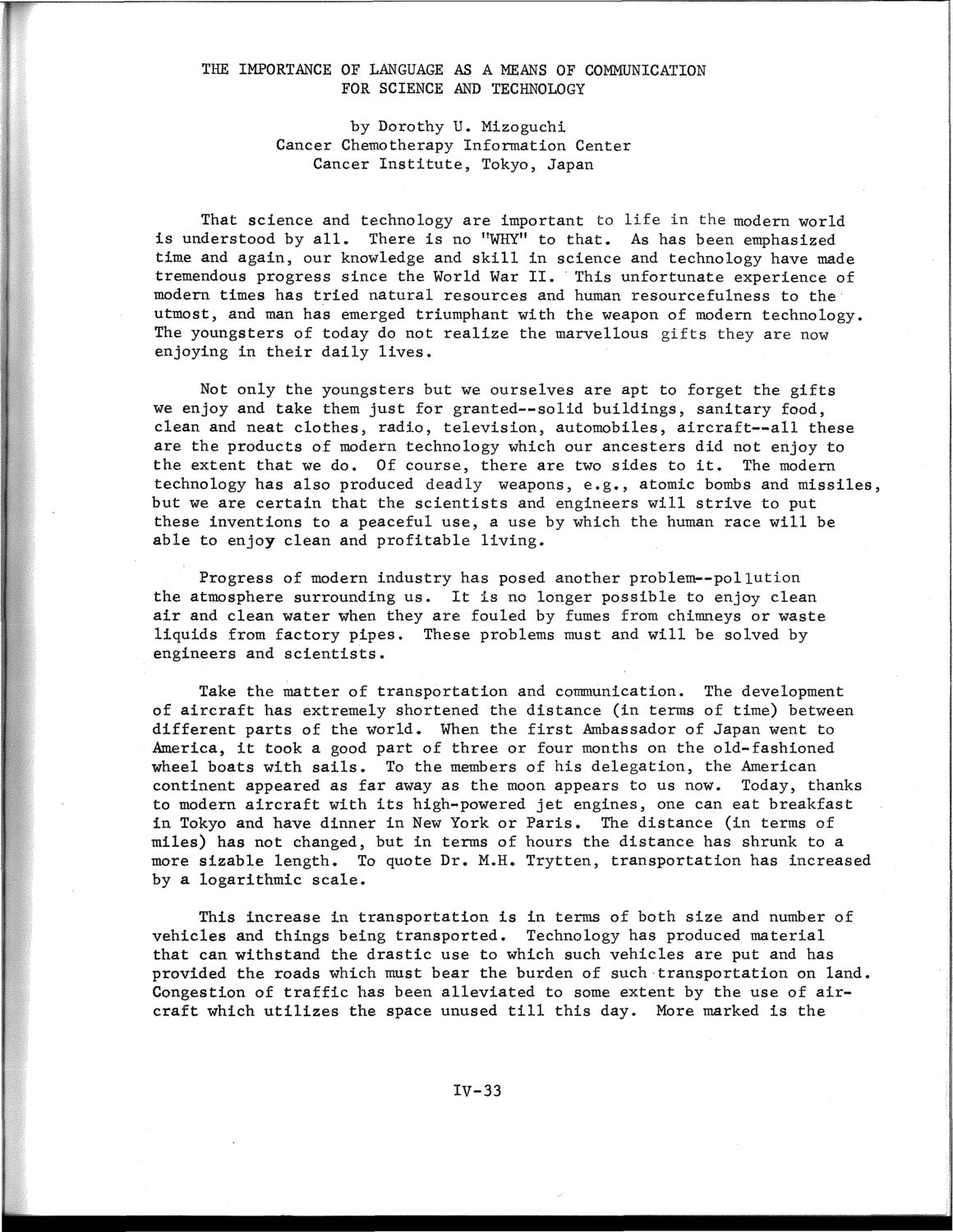| |
| |
Caption: SWE - Proceedings of the First International Conference of Women Engineers and Scientists
This is a reduced-resolution page image for fast online browsing.

EXTRACTED TEXT FROM PAGE:
THE IMPORTANCE OF LANGUAGE AS A MEANS OF COMMUNICATION FOR SCIENCE AND TECHNOLOGY by Dorothy U. Mizoguchi Cancer Chemotherapy Information Center Cancer Institute, Tokyo, Japan That science and technology are important to life in the modern world is understood by all. There is no "WHY" to that. As has been emphasized time and again, our knowledge and skill in science and technology have made tremendous progress since the World War II. This unfortunate experience of modern times has tried natural resources and human resourcefulness to the utmost, and man has emerged triumphant with the weapon of modern technology. The youngsters of today do not realize the marvellous gifts they are now enjoying in their daily lives. Not only the youngsters but we ourselves are apt to forget the gifts we enjoy and take them just for granted--solid buildings, sanitary food, clean and neat clothes, radio, television, automobiles, aircraft—all these are the products of modern technology which our ancesters did not enjoy to the extent that we do. Of course, there are two sides to it. The modern technology has also produced deadly weapons, e.g., atomic bombs and missiles, but we are certain that the scientists and engineers will strive to put these inventions to a peaceful use, a use by which the human race will be able to enjoy clean and profitable living. Progress of modern industry has posed another problem—pollution the atmosphere surrounding us. It is no longer possible to enjoy clean air and clean water when they are fouled by fumes from chimneys or waste liquids from factory pipes. These problems must and will be solved by engineers and scientists. Take the matter of transportation and communication. The development of aircraft has extremely shortened the distance (in terms of time) between different parts of the world. When the first Ambassador of Japan went to America, it took a good part of three or four months on the old-fashioned wheel boats with sails. To the members of his delegation, the American continent appeared as far away as the moon appears to us now. Today, thanks to modern aircraft with its high-powered jet engines, one can eat breakfast in Tokyo and have dinner in New York or Paris. The distance (in terms of miles) has not changed, but in terms of hours the distance has shrunk to a more sizable length. To quote Dr. M.H. Trytten, transportation has increased by a logarithmic scale. This increase in transportation is in terms of both size and number of vehicles and things being transported. Technology has produced material that can withstand the drastic use to which such vehicles are put and has provided the roads which must bear the burden of such transportation on land. Congestion of traffic has been alleviated to some extent by the use of aircraft which utilizes the space unused till this day. More marked is the IV-33
| |